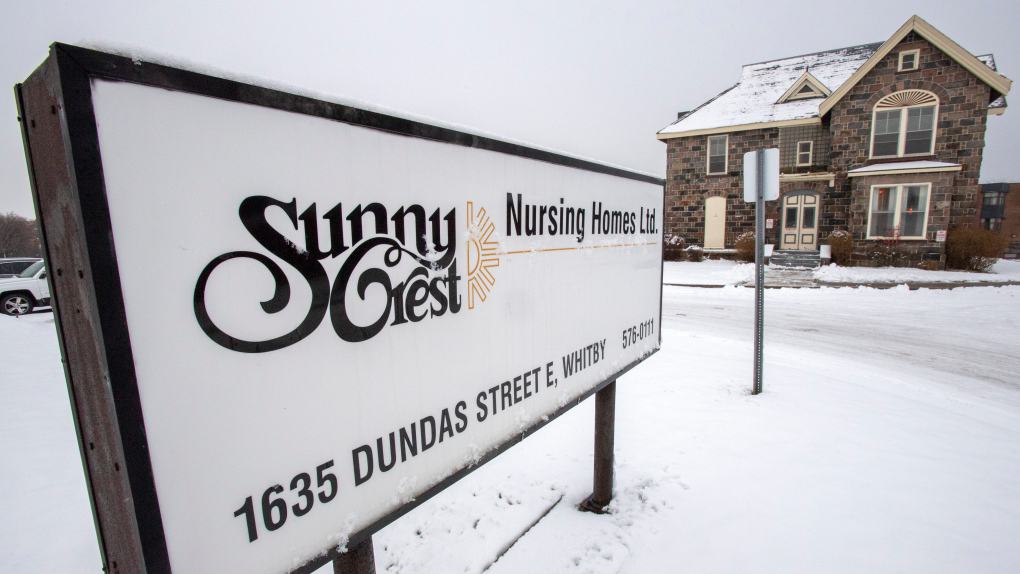New homeless shelter to open in historic former nursing home in Whitby
Published August 9, 2023 at 10:33 am

A historic house in Whitby will soon be host to a new regional homeless shelter amid a growing crisis of unsheltered people across Durham.
Durham Region operates a “by-name list” to track the people in all eight of its municipalities who are currently unhoused and using Regional services. The list provides a conservative estimate of how many homeless people are living in the Region as it does not include those outside of regional services.
Durham Social Services have maintained for several years to track how many people in regional housing services get into and stay in a home of their own. Social Services generally reports a high “outflow” rate of people leaving the list, which indicates their support gets and keeps people housed.
However, the by-name list has grown steadily in recent years as more people are becoming homeless than can be housed. Back at the tail-end of 2021, the by-name list was up to around 100 people though a recent point in time count indicated there were 270 people on the street the previous summer. The numbers fluctuate with the seasons with higher rates in summer compared to winter.
These numbers were cause for concern for Social Services at the time being quite high on average in the face of a then-expected loss of COVID-19 funding. However, things have only worsened since, with the Region reporting 218 people on the streets in December 2022 and 300 people on the by-name list in August 2023.
Numerous factors are driving homelessness rates up including rising housing costs nationwide and rapid inflation. Additionally, Durham reported a steep overnight rise in homelessness after its refugee settlement programs reached the end of their resources in July. Durham is the fastest growing region in Canada and is expected to nearly double in population to 1.2 million by 2041.
According to Regional Chair John Henry, Durham’s refugee programs became “exhausted” by July 11. “We cannot keep up with this demand. We have exhausted the capacity in our system and any funding we had available to support newcomers.” This created the risk that newcomers will become homeless as soon as they arrive in Durham.
Ajax Mayor Shaun Collier quickly echoed these concerns saying his town’s unsheltered population had increased 40 per cent “in a matter of days.” Collier said, “Without additional funding and aid for these individuals, the Town is facing an emergency situation on top of the current homelessness situation. More displaced individuals are arriving daily and with no remaining capacity in the system, people are being forced to sleep on the street.”
Both Henry and Collier called for additional support from higher levels of government, but neither the provincial or federal governments have made any public commitments.
The recent emergency led to a new partnership between the Region and Whitby to create a homelessness task force with goals to create a new service hub at 117 King St, Durham’s first family shelter at 316 Colborne St and a new “marketplace model” food bank system.
“We believe that everyone deserves to go to bed with a roof over their head, but the first step involves finding new shelter, supportive and transitional housing opportunities for vulnerable, low-income residents.”
“The Town is leading with care and compassion, and I’m calling on our community to do the same. Life circumstances such as family breakdown, abuse, job loss, addiction, or mental health challenges can leave someone in crisis and without a home – homelessness can happen to anyone,” said Mayor Elizabeth Roy.
Chief among the Task Force’s plan is a new homeless shelter at 1635 Dundas St. According to the Whitby Archives, the house there was built in 1884 for farmer Jeremiah Lick, who operated one of Ontario’s largest apple orchards at the time between Thickson and Kendalwood Rds.
The house was converted into a nursing home in the 1950s. Sunnycrest founder Maxwell Leroy bought the place in 1967 and expanded it in 1973 and 1983. After this final expansion, it grew to its current 136-room size.
However, Lakeridge Health took over control of the home in 2020 after a scathing report found it had caused “actual harm” to residents during the COVID-19 pandemic. Sunnycrest lost 34 residents in COVID-19 outbreak thanks to inconsistent infection prevention and control practices, lack of access to personal protection equipment, high-risk medication being administered two hours late and other transgressions.
Lakeridge moved all the residents out of the home by April 2022 and the Lick house has sat empty ever since. However, Whitby and the Region still see potential in the house, calling it an “ideal location” for a new shelter.
“This site is large and will be developed using a multiphase approach in planning to help build services and support systems; in the short term, it will help meet our community’s immediate needs. Long term, the site offers the potential for a coordinated and accessible service delivery model that supports people, creates a sense of belonging, and meets individualized needs,” Henry wrote.
Durham hopes to have the shelter open and ready for 45 residents by this fall. Right now they are deep cleaning the facility, disinfecting equipment, painting, repairing the floor, putting up fencing and additional planning.
The Region has launched an engagement portal to receive feedback from area residents. They’ve pledged to end chronic homelessness by 2025.
“We encourage everyone to remember that life circumstances—such as family breakdown, abuse, job loss, addictions or mental health challenges—can bring someone to be in crisis, without a place to call home. When this happens, people need support, and they need shelter,” Henry concluded.
INdurham's Editorial Standards and Policies





